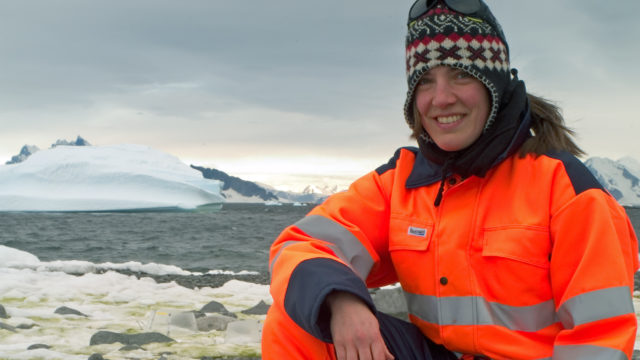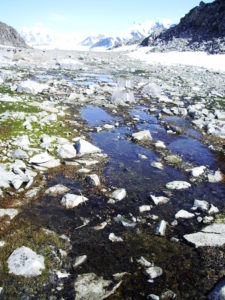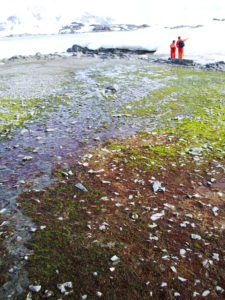
Dr Julia Kleinteich (Universität Tübingen, Germany) applied for Antarctic Science bursary funding in 2012, for a laboratory-based DNA sequencing funds to extend her PhD work at the University of Konstanz, Germany, on cyanobacterial mat diversity in the Antarctic (Kleinteich et al., 2012). Even though cyanobacteria are the dominant primary producers in the melt-water ecosystems of the polar regions, there is little known about their diversity and physiology. In order to assess and to identify the species diversity of cyanobacterial mats, she proposed to conduct one of the first pyrosequencing studies on Antarctic mats, using samples collected from Adelaide Island, Antarctica in 2010/2011. Sequencing of DNA extracts of these mats was conducted using amplicons of the universal gene 16S rRNA to determine cyanobacterial diversity, with 274 operational taxonomic units (OTUs, or distinct ‘strains’) detected.
Species richness ranged between 8 and 33 cyanobacterial OTUs per sample, reflecting a high mat diversity. The cyanobacterial genera Leptolyngbya and Phormidium (c. 55% and 37% of the OTUs per mat) were dominant. Cyanobacterial community composition was similar between mats, particularly those obtained from closely adjacent locations. Julia found that cyanobacterial sample composition varied according to multiple environmental factors, with ten OTUs and the two most dominant cyanobacterial families correlated with mat colour. Three families were significantly associated with different habitat substrates. Cyanobacterial Shannon diversity on genus level was positively associated with higher water temperatures. Many unidentified species were also sequenced, as only 3.2% of OTU types could be identified to species level. This study demonstrated the usefulness of pyrosequencing for characterizing diverse cyanobacterial communities, providing useful insights into species association with different habitats and temperatures in the region.


This work was published in Antarctic Science in 2014 (Kleinteich et al., 2014).
Kleinteich J., Hildebrand F., Wood S.A., et al. (2014) Diversity of toxin and non-toxin containing cyanobacterial mats of meltwater ponds on the Antarctic Peninsula: a pyrosequencing approach. Antarct. Sci. 26, 521-532.
Kleinteich J., Wood S.A., Kupper F.C., Camacho A., Quesada A., Frickey T., Dietrich D.R. (2012) Temperature-related changes in polar cyanobacterial mat diversity and toxin production. Nat Clim Change 2, 356-360.
